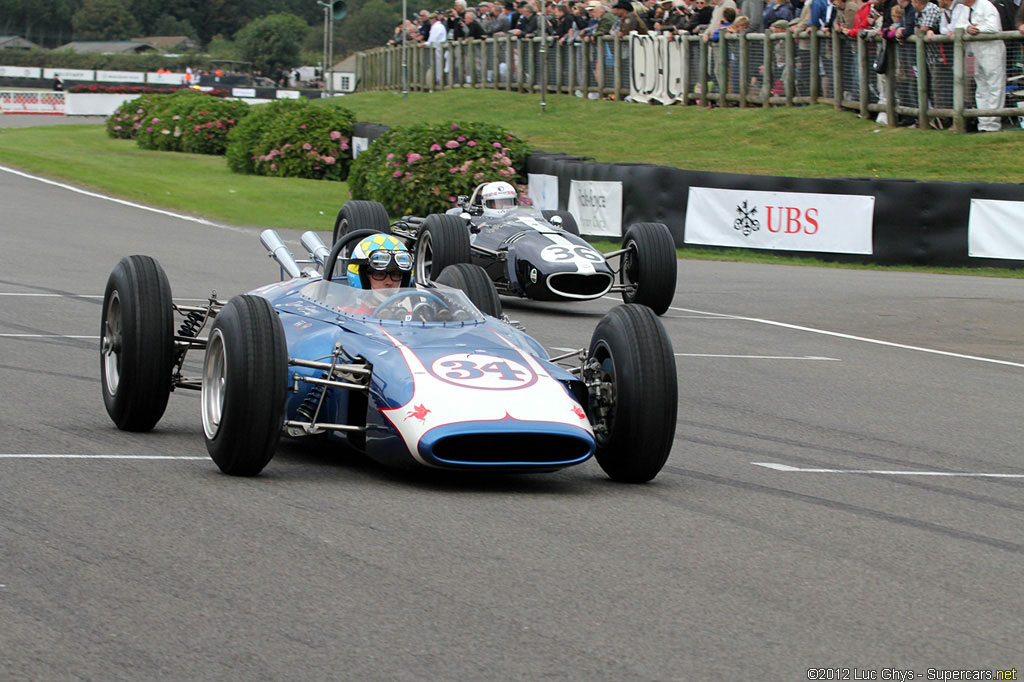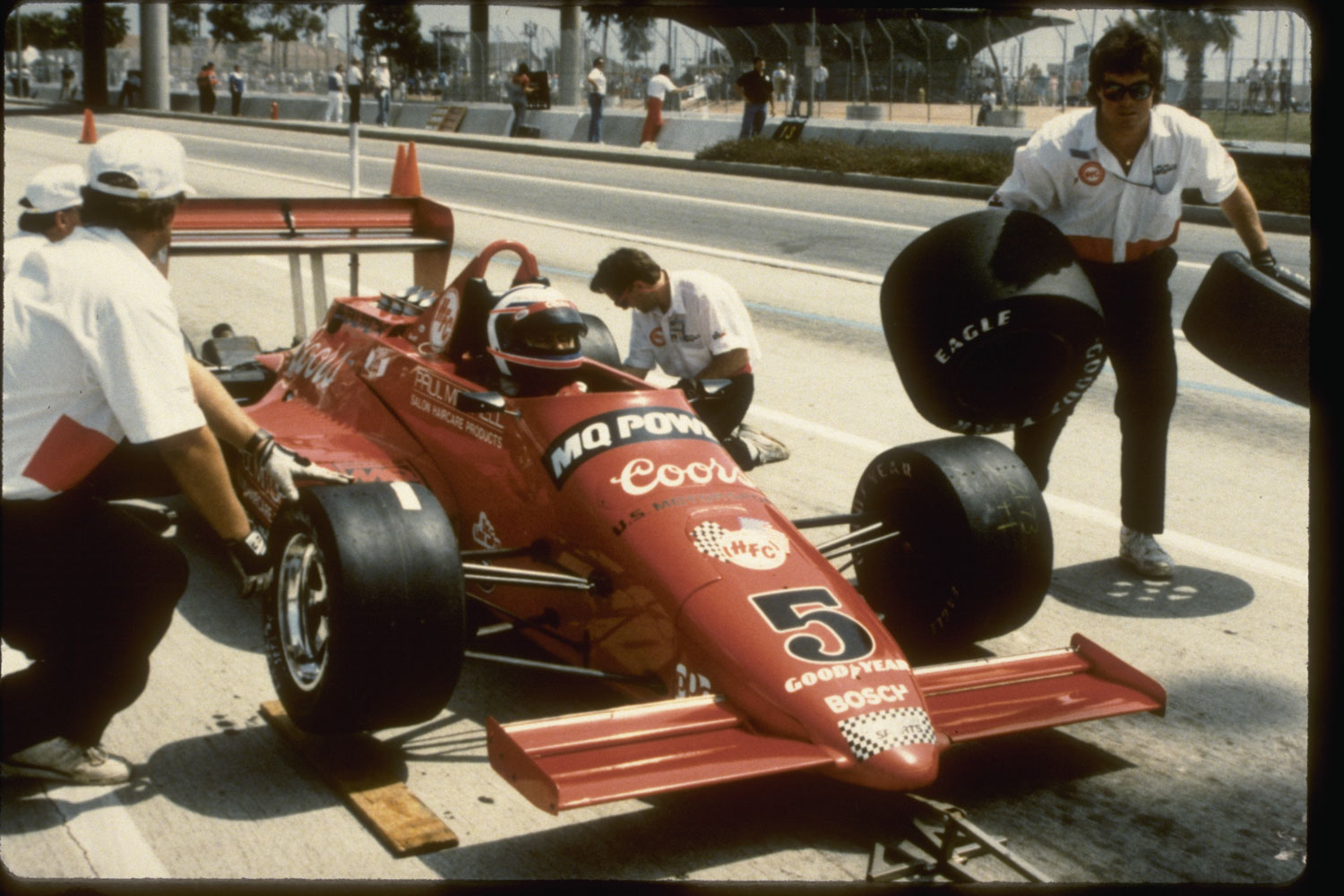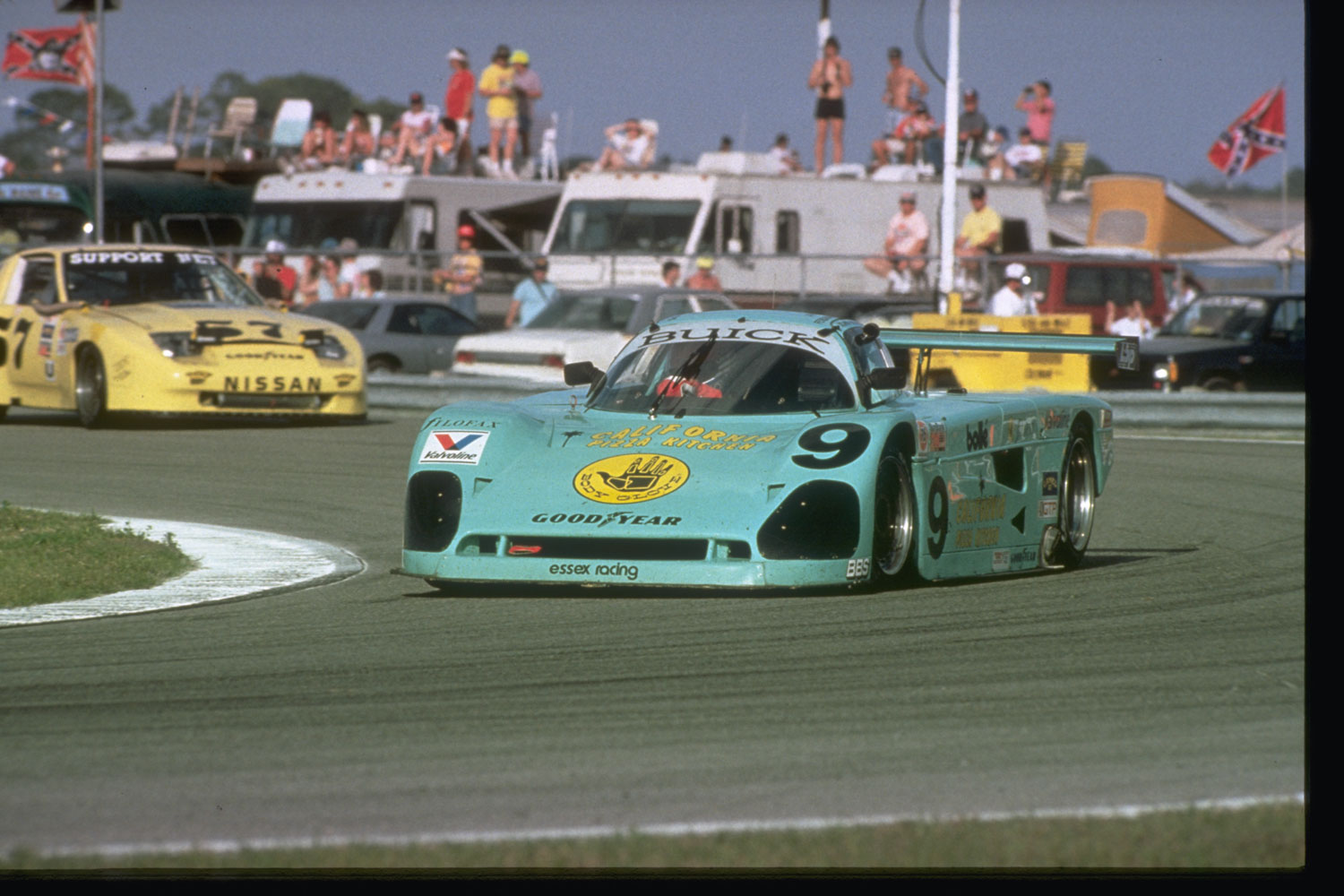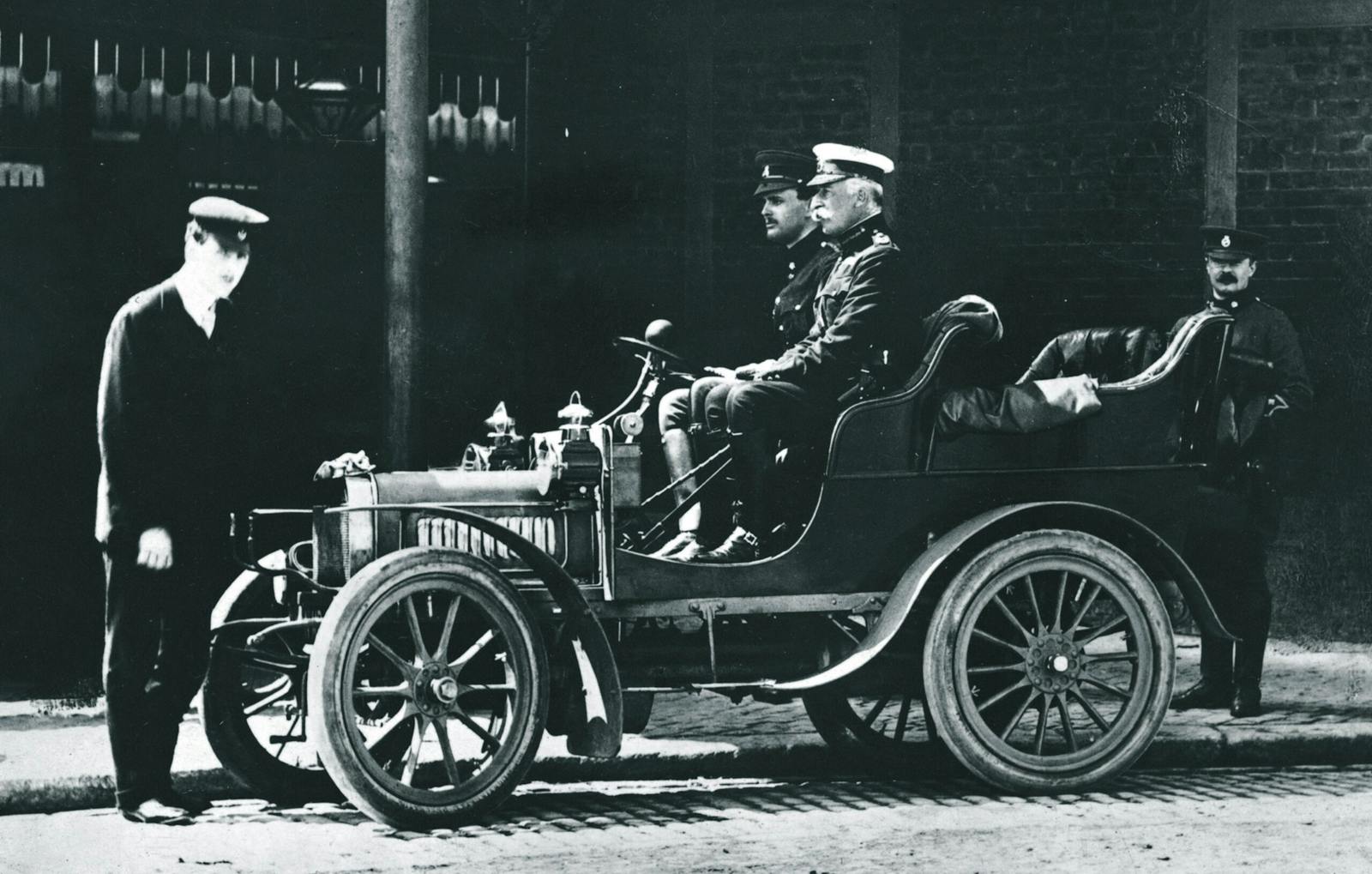Buick: Racing’s forgotten (V-6!) juggernaut
“What if,” asked Buick General Manager Lloyd Reuss in 1981, “instead of pacing the Indy 500, Buick was actually racing in the Indy 500?” Indeed, what if?
Buick provided pace cars for the Indy 500 in 1976 and ’81 that were the first to lead the drivers to the starting line using the brand’s then-signature V-6 power in a V-8 market. The aim was to demonstrate to Americans that fuel-saving V-6 engines could provide the power they demanded in their traditional-sized domestic cars.
Reuss’ challenge to his engineers was an even more compelling demonstration of V-6 power: racing against V-8s. Their response was one of the broadest assaults on motorsports ever undertaken by any automotive brand.
“It was a time when Buick really needed something new and exciting to push its image,” explained Reuss’ son, Mark, who is now president of General Motors. “Racing—and the street cars that resulted, like the GNX—did exactly that. Beyond that, the brand went racing for the exact same reasons we race now: to build customer loyalty and advocacy, and to leverage the technology transfer for the street cars.”
Buick race cars were everywhere

Through the 1980s and into the early ’90s, Buick competed and won in IndyCar, NASCAR Winston Cup, IMSA Camel GTP, Camel Lights and GT, and NHRA drag racing and participated in pursuit of world speed records at Bonneville. All at the same time and mostly using versions of the company’s popular 3.8-liter V-6 production engine.
While the Indy cars ran turbocharged versions of the Buick engine, from 1986–2002 the Indy Lights support series employed a naturally-aspirated version of the same engine that was good for nearly 500 horsepower.
On the nation’s road courses, Buick sports cars and prototypes competed in SCCA and IMSA, particularly the Camel GTP, Lights, and GT classes using still other iterations of the ubiquitous V-6. According to Ron Kociba, then the special product engine development manager for Buick’s Special Products Engineering group, the turbocharged, gasoline-fueled GTP cars (Indy cars burned methanol) ran a 4.0-liter displacement that produced north of 1000 horsepower. This was more power than the Indy cars enjoyed, Kociba explains, because they were allowed to run more turbo boost pressure and because the gas-fueled engines were intercooled, while the cooling effect of the alcohol in Indy cars meant that those engines ran without intercoolers.
The Camel Lights prototypes and GT sedans ran 4.4-liter naturally aspirated versions of the V-6 producing more than 500 horsepower. These engines served as the basis for the Indy Lights engines, Kociba says.
The NHRA drag racing engines for driver Buddy Ingersoll were produced by the very same dozen or so employees of Buick’s special projects group who created all of Buick’s racing engines. These 2500-horsepower engines were turbocharged and intercooled. The speed trick, according to Kociba, was to dump a supercooled slush of liquid nitrogen and ethylene glycol antifreeze onto the intercooler right before the car’s six-second pass on the drag strip, chilling the intake charge for more power.
Intrigue and drama from the beginning

Buick was a 10-year industry veteran horseless carriage manufacturer when the Indianapolis Speedway opened in 1909 with the running of the 250-mile Prest-O-Lite Trophy race. Buick won the race with driver Bob Burman leading home three Buicks among the nine finishers.
Buick followed that unnamed 1909 racer with the Buick 60 Special, dubbed the “Bug.” The company built two of the cars in 1910, one for Prest-O-Lite winner Burman and one for renowned racer Louis Chevrolet.
Financial turmoil at General Motors prevented Buick entering the cars in the inaugural Indy 500 in 1911, so Chevrolet sought to enter his Buick himself after the official close of entries. This required a unanimous vote by drivers and owners. The drivers all agreed, motivated by the challenge of racing against the famous Chevrolet.
But, seeing the Buick’s 110-mph speed in practice at the Speedway, the Marmon team owners recognized that the monstrous 10.2-liter, 622-cubic-inch, four-cylinder-engine would be a formidable opponent and they vetoed Chevrolet’s request. The move paid off for Marmon, as the team won the inaugural Indy 500.
Kociba saw the Buick run once as part of a historical commemoration, and he notes that it was extremely loud, which is probably no surprise for an engine of that size.

Later
Buick introduced the Dynaflash 8, a 5.2-liter, 320-cubic-inch straight eight-cylinder engine, into production in 1931, and Indy car team owner Phil Shafer used one to power his Shafer 8 special. Vintage tire manufacturer “Corky” Coker owns a replica Shafer 8, which he exhibits in his museum and at classic car shows. Buick also paced Indy in 1939.
In 1961, Buick introduced a lightweight 215-cubic-inch aluminum V-8 engine, and serial innovator Mickey Thompson (of stadium truck racing series and drag racing tire fame) thought this might be the engine that could break the Offenhauser inline four-cylinder engine’s stranglehold on the Indy 500. Thompson provided a car for Indianapolis rookie Dan Gurney in 1962 as the sole non-Offy in that year’s race.

“That thing did run good,” recalls Danny Thompson, Mickey’s son. “If the [transmission] hadn’t broken with 10 laps to go, he would have finished ninth. It was a pretty good package.”
Of course, for a brand-new production engine racing against the long-developed racing-only Offenhauser engine, the Buick was an underdog. “It was a little bit weak on the bottom end,” Thompson says. “It needed more power, compared to the Offys.”
Gurney’s ride also had the distinction of being the first American-built rear-mid-engine car to qualify at Indy as the age of roadsters was coming to an end. Alas, the Buick V-8 was a one-year experiment.
Of course, that doesn’t mean Thompson followed convention in ’63. “My dad went to a Chevrolet the following year because the block was a little bit stronger,” he says. “That was my dad. He was never down the same path as everyone else.”
Buick sold off the aluminum V-8 to Rover in 1964, and versions of this engine appeared in Range Rovers until 2004. Rover’s Buick engine saw some race glory in Triumph TR8 rally cars.
Age of the V-6

A few years later, after selling the compact 215-cu-in V-8, Buick also sold its similar-sized, but much cheaper, 231-cu-in, 3.8-liter V-6 engine to American Motors. When the OPEC oil embargo struck in 1973, Buick scrambled to find a way to give its enormous sedans acceptable fuel efficiency.
The solution in 1974 was to buy back the V-6 engine tooling and resume production in time for the 1975 model year. In 1978, Buick smoothed out the rough-running converted 90-degree V-8 design using split crankpins to yield the even firing intervals of a purpose-designed 60-degree V-6.
It also introduced a turbocharger, which was the catalyst leading Buick to fly the banner of V-6 performance for the next decade and a half. Buick used a turbo to triple the power of the 1976 Indy pace car to 306 horses from the naturally-aspirated production-engine’s meager 100, and by 1978 it was ready for production.
The challenge now was to convince the car-buying public that “V-6” didn’t equate to “slow.” This was the motivation behind Reuss’ decision to push Buick into racing in the 1980s, launching a period of motorsports participation that would be tough for any brand to match, least of all one that is positioned as an entry-luxury carmaker.
By 1984, Buick’s Indy car engine, built from the same basic V-6 engine that was powering hundreds of thousands of production cars each year, was ready, and the cars were fast in qualifying. Journalist Pat Bedard’s race ended in a crash, while Scott Brayton’s car was done in by an oil tank leak.

In the early ’80s, the Ford Cosworth V-8 was the new Offy; every other car used the British purpose-built race engine. Later, GM sibling Chevrolet entered its own Cosworth-style racing engine, produced by ex-Cosworth engineers at Ilmor Engineering.
“I was like 13 years old the first time my dad took me down there,” Mark Reuss recalls. “When the Buicks were running, you could hear the difference between those, the Chevrolets, the Cosworths… you could name every engine that went by just from its sound.”
“We had a pretty significant cost advantage over the Cosworth,” recalls engineer Ron Kubica. But most teams played it safe by going the conventional route. “Indy car racing being what it is, there tends to be some of the herd mentality.”
Indy’s equalization rules for “stock block” engines like Buick’s permitted larger 209-cubic-inch displacement and more turbo boost than for purebred race engines like the Cosworth. In 1985, Buick rode this advantage to pole position with Pancho Carter’s 212.583 four-lap average. The feat won Kociba the Society of Automotive Engineers/Indiana Section’s Louis Schwitzer Award for innovation and engineering excellence in the Indy 500.
“Running that kind of RPM with a pushrod engine produces a lot of power—the cars always got first or second row,” Reuss recalls. “Scott Brayton set the one-lap Indy record running it. The problem was getting it to hold up for 500 miles.”
Important influence

Sports Illustrated said the Buick was “perhaps the racing powerplant of the future.” Buick ran at Indy through 1992 but never did win the race due to the vicissitudes of racing. It did, however, prove to be the racing powerplant of the future, because it spawned an imitator that dominated the 500 in ’94.
Indy’s definition of a stock-block engine that benefited from the more generous displacement and boost limits had nothing to do with actual production. Instead, it simply relied on the valvetrain configuration. Race engines had overhead cams and stock blocks had overhead valves actuated by pushrods. Like the Buick.
Roger Penske realized the potential for a purpose-built engine following in the mold of Buick’s powerplant and commissioned Ilmor Engineering to produce a purpose-build pushrod engine exploiting the same allowances that let Buick-powered cars go so fast.
“It just went to prove that we were on the right track and we had gotten the right people’s attention,” Kociba says. “If you get Penske’s attention, you’ve done something.”

“The Buick ‘stock block’ pushrod engine always produced a lot of speed when it raced at Indianapolis in the 1980s and ’90s,” Penske tells Hagerty. “John Menard and his teams won several Indy 500 pole positions and were consistently some of the fastest cars in the race with the Buick engines at that time.”
So Buick’s racing program even affected Penske and Mercedes-Benz, when that brand was just returning to motorsport. “Of course, our team also made the most of the USAC rules allowing pushrod engines at Indianapolis when we worked with Ilmor Engineering and Mercedes-Benz in 1994 and won the race,” Penske says. “That was a big moment for Team Penske, but Buick was one of the first to use pushrod engines and experience some success with that formula at Indianapolis.”
The Menard racing team kept racing the V-6s through 1996, though without Buick’s official sanction. Driver Eddie Cheever set an Indy 500 lap record speed of 236.103 mph.
NASCAR


NASCAR legend Richard Petty is synonymous with the Buicks he traditionally raced. OK, not really. But he did race Buicks at Daytona in 1959 and in ’81, bookending his hall-of-fame career that is most strongly associated with his glory days driving Plymouths.
Buick’s ’80s racing push got off to a strong start with the 1981 and ’82 Winston Cup championships by Darrell Waltrip and Bobby Allison. Reuss lists Allison’s NASCAR Miller High Life Regal as one of his favorite racing Buicks (along with Brayton’s Indy car), possibly as a result of his visit with Allison’s team owner, Junior Johnson.
Johnson was the colorful subject of Tom Wolfe’s Esquire essay, “The Last American Hero is Junior Johnson. Yes!” Reuss remembers learning why.
“The first time my dad took me to Daytona, Junior Johnson and his wife, Flossie, were hosting a team dinner at the Holiday Inn,” he says. “Junior poured some moonshine out over a glass countertop, and lit it on fire. And he said to me, a teenager at the time, ‘Look at this, boy. This is how you tell if it’s any good. If the flame’s all blue, it’s good. If the flame has yellow in it, it’s not.’ His burned nice and blue.”
Buick racing elegy

Ultimately, Buick’s racing heyday died down, as the rear-drive Regal foundation for the company’s stalwart performance cars like the Grand National and GNX went out of production. GM moved on to Oldsmobile for its Indy car program in the mid-’90s and decided to stop racing against itself in NASCAR, with the focus on Chevrolets for Dale Earnhardt and Jeff Gordon.
“We made a mark,” Kociba says. “I think we fulfilled our objective in terms of changing public perception of what you could do with a V-6. It has been a very successful engine configuration.”
However, don’t look for a Buick racing revival any time soon, despite current president Mark Reuss’ family history with the brand. “We’ve been very successful with our two-brand approach to racing, Chevrolet and Cadillac,” he says. “A key reason we race is the technology transfer that regularly moves innovation from track to street cars. In that way, all our customers—and all our brands including Buick—benefit from our current racing programs.”
Maybe we just need to encourage him to ask himself, “What if?”





I don’t know how I missed this article. I have a 1987 Buick Regal Grand National and a 1989 Pontiac 20th Anniversary Trans Am Indianapolis Pace Car. Both cars use modified 3.8L V6 turboBuick engines. I enjoyed reading about the race history. My Dad worked at GM and briefed Lloyd Reuss a few times – said he was a great guy!